
Father and son Ph.D. graduates, Antoine Chamoun-Farah (left) and Habib Chamoun (right).
Children have followed in their parent’s professional footsteps for millennia. Trades have been passed down for generations, even in this modern age of technology.
According to a study published in 2022 by EngineeringUK, parents who are confident talking about engineering are more likely to influence their offspring to pursue careers in STEM.
This story though, stands out from the pack. A pair of graduates—father and son Habib Chamoun and Antoine Chamoun-Farah— received their Ph.D. from the McKetta Department of Chemical Engineering, 37 years apart. They also shared a professor who was instrumental in their education journey.
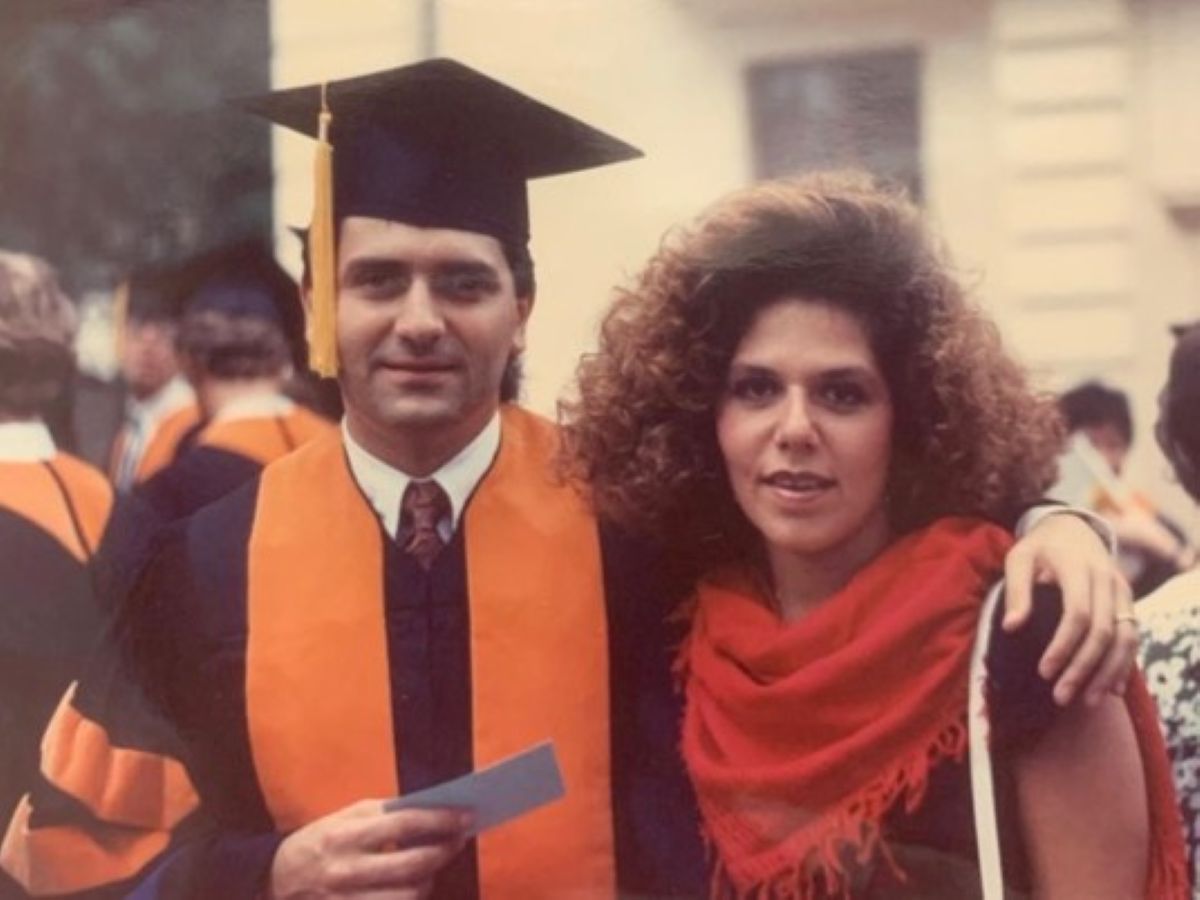
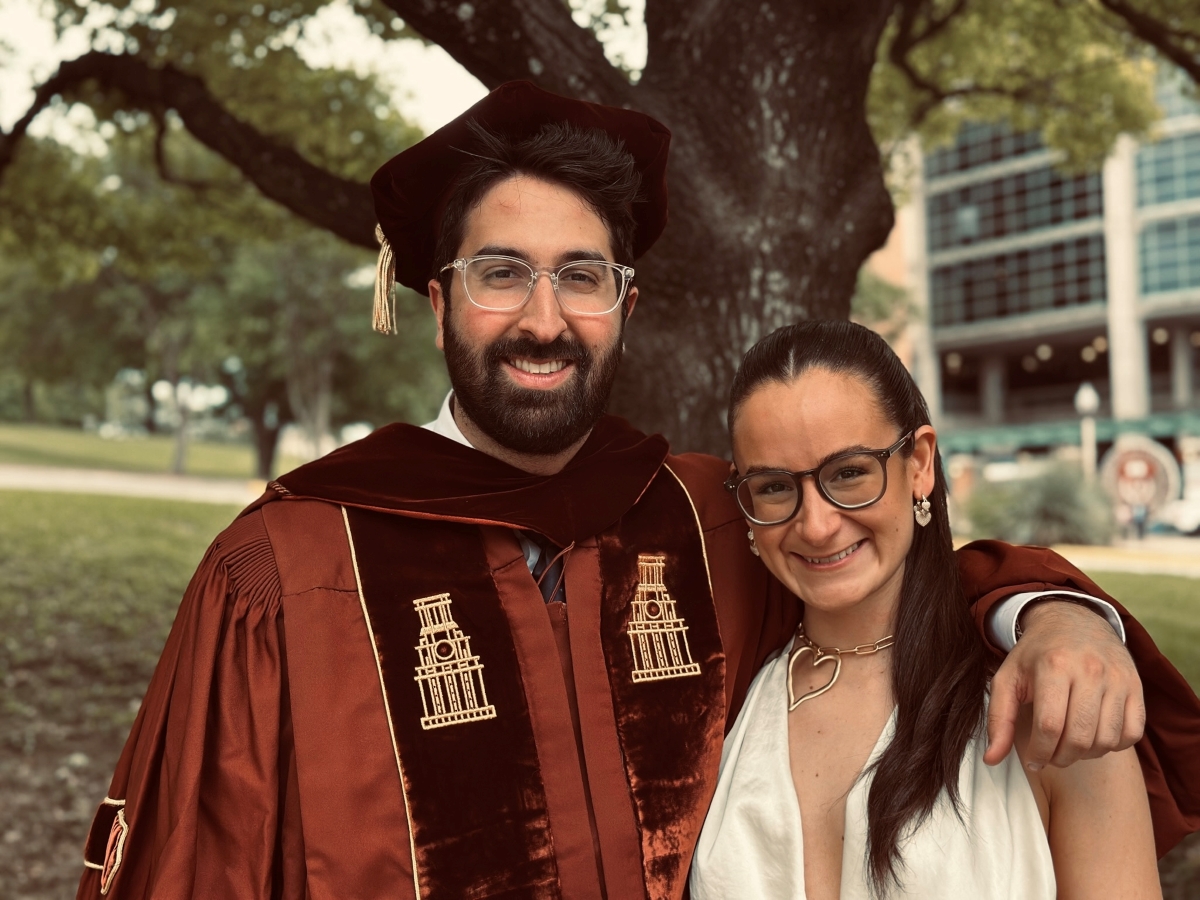
Left: Habib Chamoun received his Ph.D. in chemical engineering in 1988, accompanied by Marcela Farah. Right: Habib’s son, Antoine Chamoun-Farah, earned his Ph.D. in chemical engineering in 2025, 37 years later, with partner Maria Amador, who has bachelor’s degrees in math and biomedical engineering from UT.
Back In the Day
Flash back to the mid-to-late eighties: the tech sector in Austin was burgeoning and the labor market was bright. The University’s then-new Chemical and Petroleum Engineering building, CPE as we know it, offered cutting-edge research and classroom space for an increasingly demanding field. And Keith Johnston, who joined the department in 1982 and remains there today, would become the thermodynamics professor for a young Habib Chamoun.
Habib, the son of Lebanese immigrants to Mexico who worked in commerce, earned his bachelor’s in chemical engineering and business management from Tecnológico de Monterrey, Mexico. Under the mentorship of Robert Schechter and Mukul Sharma at The University of Texas at Austin, Habib studied flow rates of particles through water chemistry and specifically the phenomenon known as peeling. His work ultimately improved oil distraction recovery.
Habib obtained his Ph.D. in 1988, becoming the first in his family to earn a doctorate, with Johnston serving on his dissertation committee. Habib’s first son was born in 1989 in France, during his postdoctoral stay at Elf Aquitane. He met the love of his life, Marcela Farah, in Guadalajara a year earlier, and they would go on to have four children.
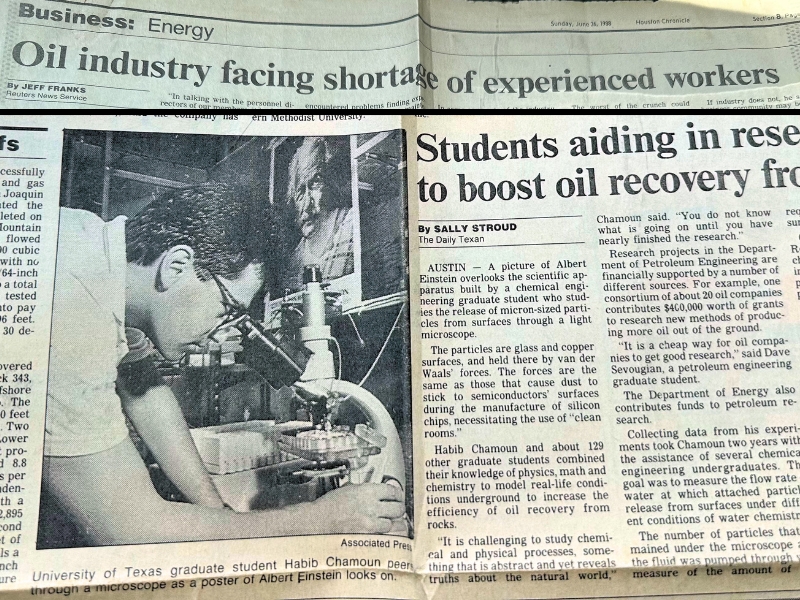
Habib Chamoun appears in the Houston Chronicle in 1988.
Habib’s work on feasibility studies, safety and environmental audits for refineries took him all around the world in the 1990s. He developed strategic relationships with clients such as DuPont, Eastman, Pemex and Ameco.
These relationships helped him transition into business development and negotiation coaching and training. His expertise became cross-cultural negotiations and client relationship management. And he excelled.
He has trained thousands of global participants from diversified sectors—oil and gas, mining, metals, petroleum, chemical, commercial and institutional, pharmaceutical, automotive industry, real estate and more. Habib discovered a niche in bridging the gap between engineering and the social sciences.
For the past 25 years, he has dedicated his career to teaching, research, and developing methodologies that connect technical knowledge with human and organizational dynamics. Habib has authored several articles on negotiation. Habib’s enthusiasm for shaping future business leaders would eventually lead him back to the classroom. He is an adjunct professor at Texas A&M Kingsville College of Business, Université Catholique de l’Ouest in Angers, France, and at the Washington University Sever Institute in St. Louis.
“I often think of something my parents used to say: Money goes and comes. Education—no one can take that away from you,” Habib said. “We’ve tried to live by those words. At the end of the day, education is the greatest legacy we can offer our children.”
Back to School
This summer, Habib returned to the Forty Acres to offer the highly participatory elective Engineer the DEAL: Mastering Negotiations. The course aims to fill a gap in engineering education by offering tools in negotiation, conflict management and communication that aren’t typically part of technical training.
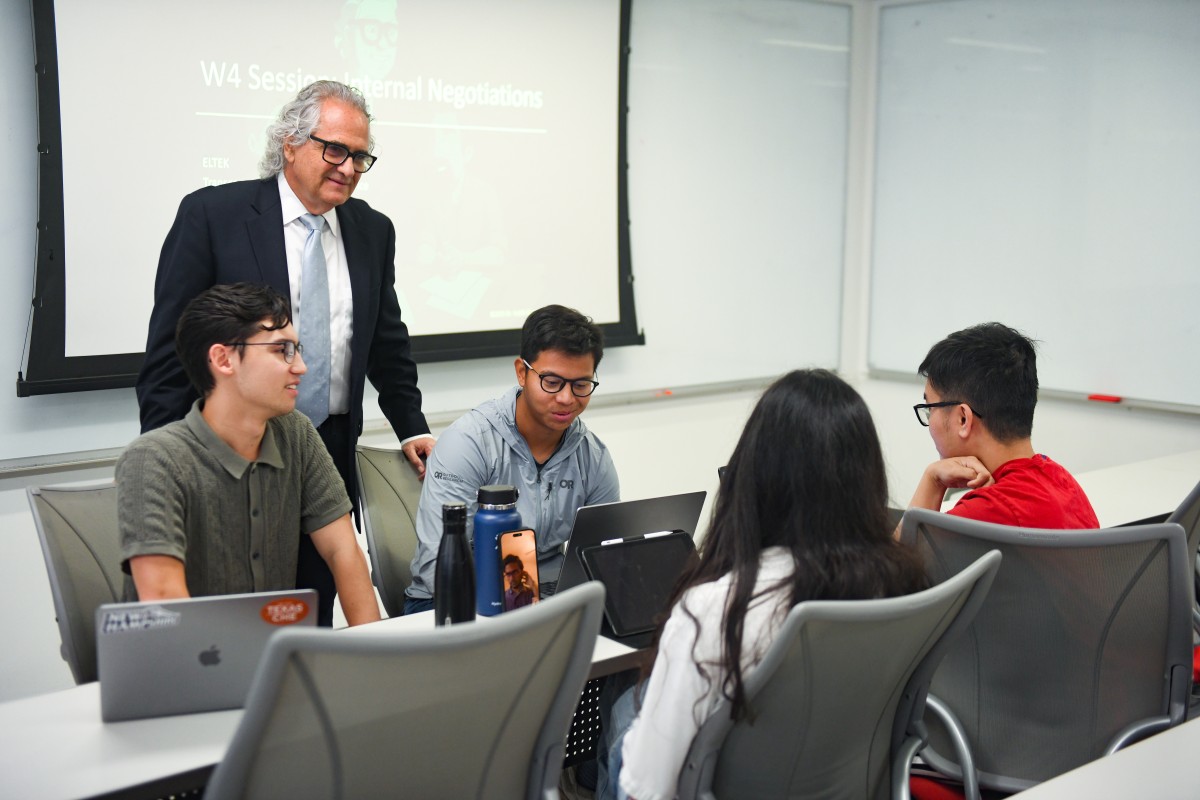
A negotiation exercise in Habib Chamoun’s course Engineer the DEAL.
Graduate students practiced using principle-based tools and techniques to reach agreements across different cultures. The course tested best practices from the Phoenicians, arguably the most famous negotiators of ancient history. Students honed skills through role playing, simulations, readings, and case study analysis.
One student said the course was “unconventional (in a good way) and complements our engineering mindset. We encounter negotiations more often than we think. Learning to approach them systematically and emotionally is a game-changer.”
The Next-Gen Engineer
Antoine Chamoun-Farah, the youngest of Habib and Marcela’s three sons, listened intently to his dad’s technical table talk as a kid.
“I vividly remember when Antoine was in middle school and told me he wanted to become a chemical engineer. Surprised, I asked him why. His response was, ‘Because I’m very proud of you, Dad—you’re my role model.’” Habib was deeply moved.
Antoine excelled in academia, with support from his parents throughout every stage. His mom would even deliver home-cooked meals to Austin from time to time.
He earned a B.S. in mathematics (Summa Cum Laude) from St. Edwards University, a B.S. in chemical engineering and a Master of Engineering in engineering management from Washington University. He served as corporate relations chair for Texas ChE’s Graduate Leadership Council, received a Dow Research Award, a UT Chevron Energy Graduate Fellowship and was named a Forbes 30 under 30 Scholar, and on and on.
Antoine earned his Ph.D. in chemical engineering in 2025, in just three and a half years, under the supervision of Joan Brennecke and Benny Freeman, giants in their field.
It has been my dream since middle school to earn a Ph.D. in chemical engineering at UT Austin. Did I know what that really meant back then? Absolutely not.
Antoine Chamoun-Farah
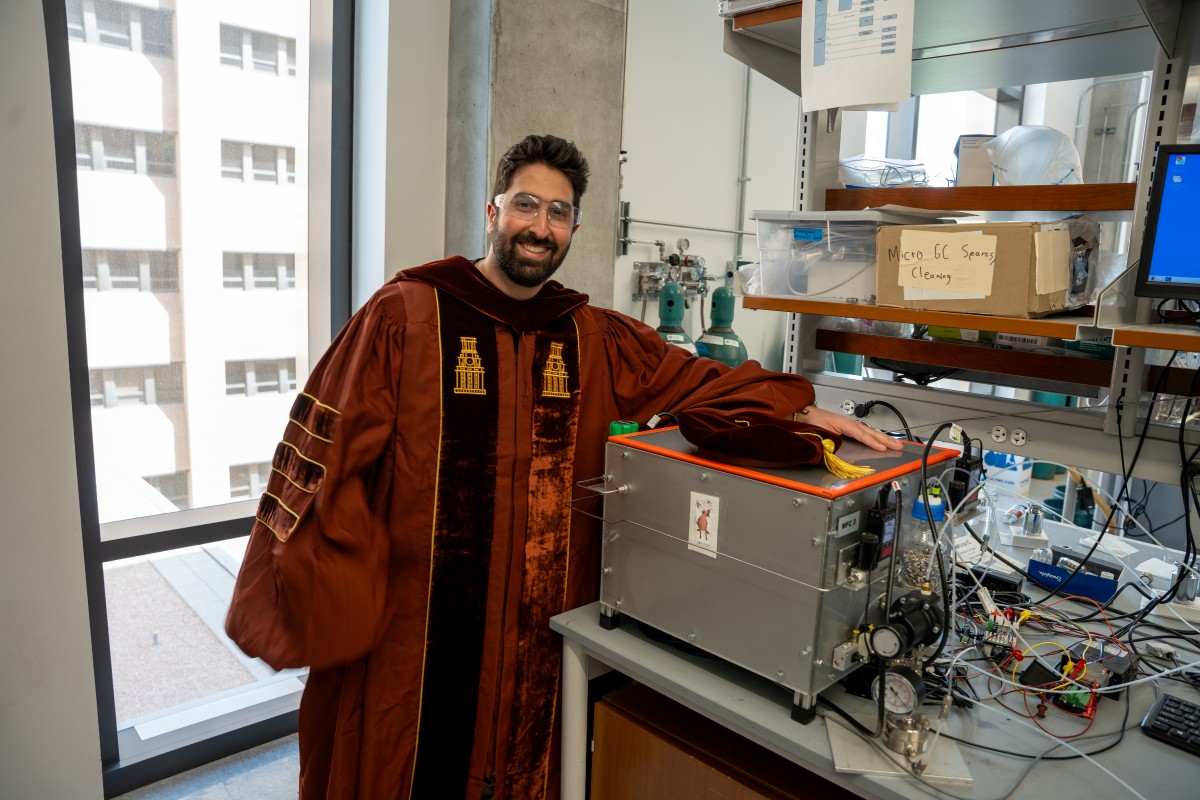
Antoine Chamoun-Farah with his automated mixed-gas sweep-cell, nicknamed “RatDog,” for testing direct air capture.
In Brennecke’s lab, he characterized ionic liquids (ILs) and measured their thermophysical properties. In Freeman’s lab, he put the ILs into porous membranes to understand how their properties affected their separation performance.
Johnston, the thermodynamics professor from Habib’s days at UT in the 1980s, served on Antoine’s dissertation committee as he did Habib’s. But their mentorship actually began years before.
“During my undergrad at St. Eds, I met him at a memorial service for Robert Schechter in CPE. Later, I visited him for advice on the dual-degree program I was going to do with Washington University in St. Louis,” Antoine explains. “Once at UT, I happened to need his expertise as a committee member, and the rest is history.”
Antoine has nine first author scholarly papers and a handful of co-author papers either published or currently in progress. His thesis focused on direct air capture and post-combustion carbon capture.
With the help of chemical engineering staff, Shallaco McDonald, David Gray, and Kris Gleason (Freeman’s lab manager) he built four automated systems. His favorite: an automated mixed-gas sweep-cell (nicknamed “RatDog”) that allowed his team to test direct air capture feed conditions at different humidity levels.
To see my former professor (Keith Johnston) serving on my son’s dissertation committee, in the same program, in the same field, at the same university—what are the odds? It was nothing short of transcendent.
Habib Chamoun
An internship at ExxonMobil served as a preview for life post-graduation. Antoine is now helping ExxonMobil curb carbon dioxide emissions through pilot plant operations and data analysis for their direct air capture program as a process development engineer in their Novel Process Scale-Up & Intensification group. His experience building multiple experimental systems at Texas ChE would directly translate to his current role.
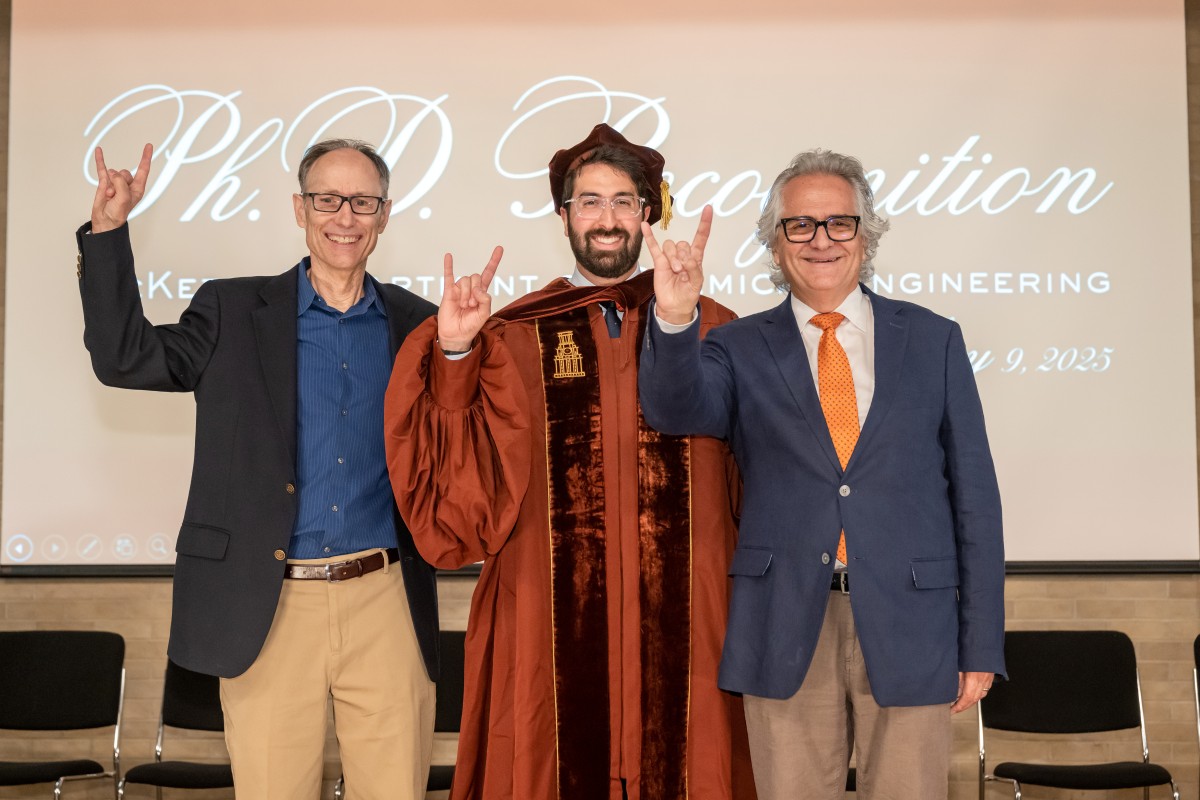
Antoine Chamoun-Farah and Habib Chamoun both got support from professor Keith Johnston during their educational journeys.
It’s All ChE-nnected
It was through Habib’s early social connections that Johnston would transition to the field of colloid and interface science. They had both befriended Schechter and bonded over social activities. Around this time, Johnston served as faculty advisor for Joan Brennecke, the very same Joan Brennecke who would mentor Antoine some 40 years later.
“Knowing how much Habib’s education and care for people would breed excellence in his child in chemical engineering epitomizes the finest ‘McKetta-family’ nurturing environment,” Johnston said. “He has sought connections for Antoine, just as he did for me, as he does for everyone. The Chamoun’s and Joan Brennecke chose us as the place to pass on their value as professors.”
Family Legacy
The McKetta Department of Chemical Engineering has inspired its share of legacy graduates. Gregg Goodnight and his daughter Georgina obtained their bachelor’s degrees in 1973 and 2003, respectively. George Gibbs earned his M.S. in 1952 with daughter Joan earning her bachelor’s in 1984. Craig Cassel B.S. 1987, and his daughter, Corrine B.S. 2020, told their story in Like Father, Like Daughter. And though our department’s namesake Dr. John J. McKetta, who joined the department in 1946, didn’t graduate from Texas ChE, his son R.A. “Randy” McKetta obtained his B.S. in 1972.
If you are a Texas ChE legacy student or graduate, we would like to know what you’re up to! Email: media@che.utexas.edu to share your family’s story.
